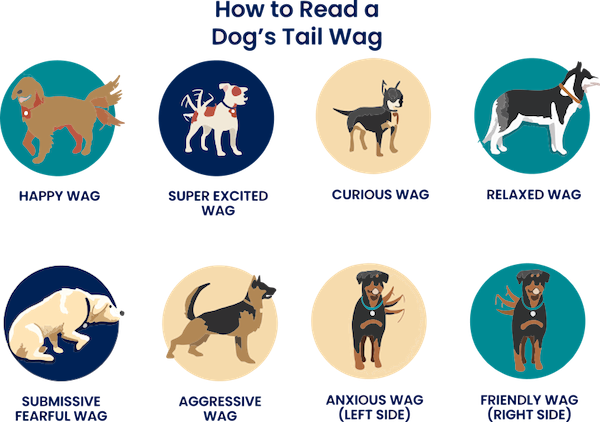Is it the tail wagging the dog or the other way around?
According to Merrian-Webster, The tail wagging the dog is an idiom that usually refers to something important or powerful being controlled by something less so.
Dogs have a vast and flexible repertoire of visual, auditory, smell and body signals that allow them to be quite expressive and quite good at dog–human interaction. Living in close contact with humans for at least 30,000 years, dogs have developed specific skills enabling them to communicate flexibly with humans.
Scientists have studied the importance of having a tail as it applies to various animals. Studies have shown that numerous animals from lizards to squirrels used their tails to pull off impressive maneuvres, such as righting themselves mid-air when falling from trees.
While cats don’t need a tail to flip themselves over and land on their feet, they do use their tails for balance and as counterweights to perform extreme hunting moves in the wild, including rapid, tight turns to keep up with their prey. With dogs more inclined to stay on the ground, scientists were unclear whether the dog’s tails helped with agile movements or primarily served as waggable communication devices, and/or to fend off unwanted visitors such as flies.
Scientists who have studied animal locomotion at the Max Planck Institute for Intelligent Systems in Stuttgart built a mathematical model that allowed them to check what happens when dogs twist and turn their torsos, and move their legs and tails, when they bound into the air. The finding suggests that tails are not as critical for agile movements in dogs as they are for other animals. Moving the tail mid-jump, the researchers found, changed the dog’s trajectory by a mere fraction of a degree. Across the dog family, “It appears the inertial impacts that tail movement has on complex maneuvers such as jumping, have little to no effect,” the authors write.
- It turns out that after decades of research into man’s best friend, scientists have concluded that the tail cannot, in fact, wag the dog.
Conclusion: The tail does not wag the dog when it comes to agility.
The dog’s tail is, in fact, primarily used for communication (and an object of curiosity or occasional break from boredom when they chase it)
Body Areas and Communication
Dogs use their whole body to communicate, conveying information intentionally or otherwise. They can crouch down or flatten back their ears to avoid conflicts or during stressful interactions. In close-range social interactions, dogs can also obtain and deliver information about their inner state through their facial expression, modifying gaze, ears, and mouth position and. Previously, facial expressions were considered involuntary displays of an individual’s emotional state. However, recent research has discovered that dogs produce facial expressions as an active attempt to communicate with others.
The eye region plays an important informative role in face recognition in dogs. Some dogs stare at others to threaten them, while they avoid making eye contact to appease and to decrease the tension during an interaction. Canine eyes can communicate individuals’ emotional states. Moreover, dogs can derive information about other individuals’ intentions by evaluating their willingness to make eye contact, especially in agonistic contexts. The color markings around the eyes (e.g., small brown spots above the eyebrow ridge of Dobermans and Rottweillers), could favor attention catching toward the eye region in order to facilitate the interpretation of specific communicative signals conveyed by different facial expressions.
The role of the tail

The tail contributes to help define postural displays and its positions and movements are used to convey different information about the individuals’ emotional state and intentions.
- The tail is held high to communicate confidence, arousal, or the dog’s willingness to positively approach another individual, for example greeting and playing, while it is held stiff to express a threat or the individual’s anxiety.
- On the contrary, a tail held low or tucked between the limbs signals fear, anxiety, or appeasement as it contributes to decreasing the individual’s body size.
- Dogs wag their tails loosely from side to side to communicate friendliness or their excitability.
- Fast movements of the tail, instead, express different inner states according to its position; dogs communicate confidence if they hold their tail high, while a low wagging is generally associated with anxiousness, nervousness, or internal conflict.
- There is now evidence that the direction of tail wagging movements is also directly involved in intraspecific communication. Specifically, when dogs look at stimuli with a positive emotional valence (e.g., their owner), their tail moves more towards the right side; on the other hand, when dogs look at clear negative emotional stimuli (an unfamiliar dog with a clear agonistic behavior), a higher amplitude of tail wagging to the left appears.
As we see, dogs have a vast repertoire of visual, tactile, acoustic, and olfactory signals that they use for an expressive and fine-tuned communication with both other animals and humans. As research into our furry friends continues, the more we humans realize that dogs are a lot smarter, adaptable and more sophisticated than we ever gave them credit for.
Enjoy them.
[Link]
